Specifically designed to help candidates revise for the MRCS exam, this two-volume pack features 350 Single Best Answer multiple choice questions, and 250 Extended Matching Questions, divided into 96 themes, covering the whole syllabus. Containing everything candidates need to pass the MRCS Part A, the pack focuses intensively on the application of basic sciences (applied surgical anatomy, physiology, and pathology) to the management of surgical patients. The high level of detail included within the questions and their explanations allows effective self-assessment of knowledge and quick identification of key areas requiring further attention. Varying approaches to Single Best Answer multiple choice questions are used, giving effective exam practice and guidance through revision and exam technique. This includes clinical case questions, positively-worded questions, requiring selection of the most appropriate of relatively correct answers; ‘two-step’ or ‘double-jump’ questions, requiring several cognitive steps to arrive at the correct answer; as well as factual recall questions, prompting basic recall of facts.
Related products
-
How to Pass the MRCS OSCE (Vol 1 & 2)
₹1,400.00This is the only guide you need to pass the MRCS Part B OSCE examination. This unique two-volume set includes comprehensive revision notes on all the areas covered in the exam, numerous practice scenarios with model answers in the format they would be encountered in the exam, and essential exam technique tips. Written by a team of editors and authors with extensive experience of the exam and all the recent changes, it broaches topics that can often trip up the candidate, including communication and history-taking skills. Revision is aided by a multitude of images and illustrations, as well as boxes highlighting clinical tips and exam hints. Volume 1 covers basic surgical skills, including peri-operative care, as well as patient safety, history-taking, communication skills, applied surgical sciences and critical care. The book also provides tips on exactly how the examiners will expect you to approach the exam. Volume 2 addresses the stations that exam the four specialty areas: Trunk and Torso; Limbs and Spine; Head and Neck, and Neuroscience. It covers the anatomy, physiology and pathology in each of these four speciality areas along with detailed clinical exam scenarios and a bank of likely clinical questions and model answers.
-
Current Progress In Nephrology Volume 3
₹1,995.00In the third volume of Current Progress in Nephrology, recent advances in different areas of kidney disease have been authored by eminent clinicians. The first few chapters discuss the genetics of renal development, regenerative medicine in relation to kidney, molecular diagnostics. Newer diagnostic modalities like functional magnetic resonance imaging, point of care ultrasonography and electron microscopy of organised deposits in kidney diseases are discussed in the subsequent 3 chapters. Diagnosing and managing difficult conditions of chronic kidney disease like, hepatorenal syndrome, pregnancy related renal problems, and scleroderma crisis are discussed in appropriate chapters. Anaemia, usually associated with CKD, is a significant cause of left ventricular hypertrophy and cardiovascular disease. The guidelines for correcting anaemia with iron supplementation and erythropoietin stimulating agents are provided in an appropriate chapter. Autosomal dominant rubulointerstitial kidney disease, a frequent cause of progressive CKD often remains an underdiagnosed condition and has been highlighted in one nice review. Understanding another a rare condition, thrombotic miocroangiopathy is important since it may lead to endstage renal disease or death, if not identified and appropriately treated in time.
-
Puzzling Cases in Pediatric Dermatology Volume 1
₹995.00The book covers 30 Unique Cases in Pediatric Dermatology written by some of the Leading Experts. The book would be highly useful to all Dermatologists, Pediatricians, Consulting Physicians, Post Graduate Students and those interested in treating Children with Dermatological Conditions
-
Manual of Clinical Endocrinology 2/Ed.
₹995.00Algorithms provide a logical, concise and cost-effective approach to medical reasoning: utilizing a concise, step-by-step approach based upon clues from the history, physical examination and laboratory studies, algorithms help avoid excessive unnecessary procedures and testing. The 2nd edition of Manual of Clinical Endocrinology deals with practical issues ranging from simple thyroid function testing and thyrotoxicosis to approaching a patient with suspected thyrotoxicosis. Algorithms are simple and effective tools for the practitioner in a hurry and since the majority of the intended audience, physicians, general practitioners and postgraduates have very little time amidst their busy clinical routine, this manual uses algorithms. Twenty-two clinical issues are covered by an algorithmic approach, breaking down long lists and tables of differential diagnosis into smaller, more manageable ones. Common clinical symptoms, signs and laboratory abnormalities are classified as they present themselves at the patient’s bedside. This manual is an attempt to provide the busy practitioner with a desktop reckoner which will be useful while approaching a patient with a suspected endocrine problem. The authors have strived to be practical not pedantic – at the same time have made great effort to ensure that the recommendations are evidence based.
-
HANDBOOK OF DERMATOLOGIC DRUG THERAPY 2/Ed. Revised & Updated
₹1,495.00Dermatology is a branch of medicine which relies heavily on outpatient treatment and also managing several incapacitating diseases as inpatients. The load of patients in any dermatology OPD is ever increasing, thanks to the recent awareness about the dermatological diseases. The role of a Dermatologist is complicated and quite demanding with reference to innumerable diseases that he has to deal with. Added to this, he is also expected to be well versed with all the drugs that he prescribes, what with constant addition of newer drugs. It is humanly impossible to remember and recollect the various indications, dosages, formulations, side effects and mechanism of actions of all the drugs that he is suppose to use. Another perennial threat is that posed by drug interactions. Books available on this subject are either very exhaustive or less informative. Handbook of Dermatologic Drug Therapy is published is an attempt to bridge this gap. In this second edition, newer therapies like biologics has been added. Each chapter has been updated to add the recent advances. The book is designed and written in a simple language and is not pocket heavy. The target readers are undergraduate, postgraduate and the practicing dermatologists alike. The contents of the book follow a standard format like chemical structure, mechanism of action, pharmacokinetics, indications, contraindications, side effects. Two other highlights of this book are prescription pearls and important drug interactions.
-
CARDIAC MRI Simplified CONCISE GUIDE
₹625.00Who Will benefit from this book? * Genuine interest in cardiovascular imaging * International certification exams * Enhancing skills in interpretations of cardiac MR Why this format? * Salient points, easier and faster to read. * Questions-answer approach for better understanding of topic. * Short and well contained guide. What are the highlights of the book? * Comprehensive coverage of all topics * Appropriate illustrations * Inclusion of recent advances
-
Clinical Pediatric Dermatology
₹1,350.00This book aims at bridging that gap and putting the basic concepts of pediatric dermatology together which help the dermatologists,post graduates and pediatricians understand and manage the pediatric dermatoses in India. With primary focus on beginners in pediatric dermatology and pediatricians,the conciseness and brevity of clinical notes has not been compromised. This book has been written keeping in view the interests of both pediatric dermatologists and pediatricians. In this era of sub-specialization, general pediatricians who offer primary care to children must be knowledgeable in pediatric dermatological problems.

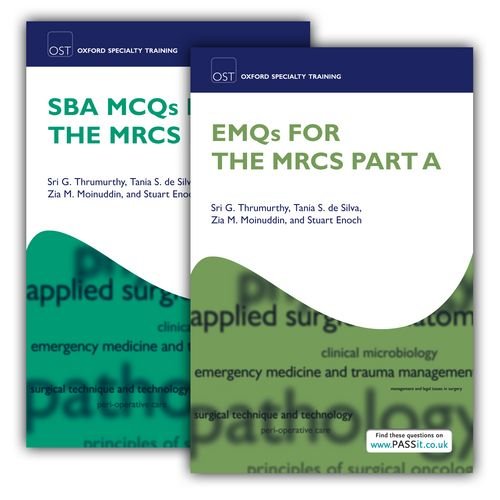
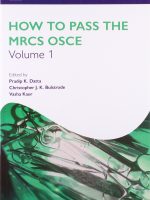
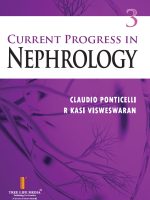
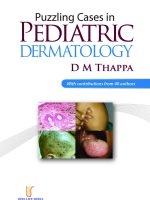
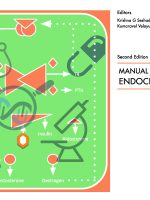
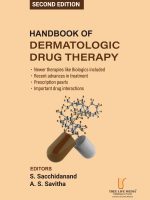
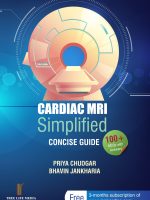
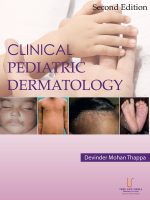
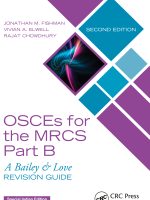
Be the first to review “SBA MCQs and EMQs for the MRCS Part A Pack: 2 (Oxford Specialty Training: Revision Texts)”